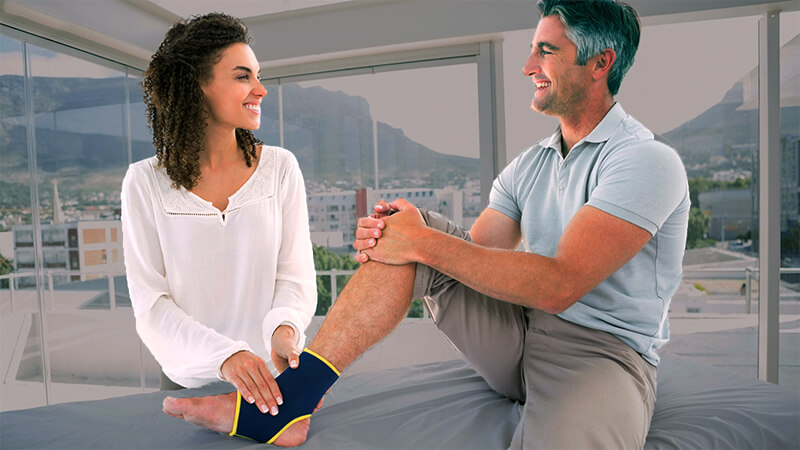Residency Insight
Fulfillment of Expectations After Foot and Ankle Surgery – A Review
Fulfillment of Expectations After Foot and Ankle Surgery – A Review

Reference
Henry JK, Roney A, Cody EA, et al. Fulfillment of Expectations After Orthopedic Foot and Ankle Surgery. Foot Ankle Int. 2019 Nov;40(11):1249-1259.
Link to Original Article
https://journals.sagepub.com/doi/full/10.1177/1071100719864354
Design/Level
Level 2 Prospective Comparative Series
Intro
Historically, success of foot and ankle surgery has been determined by standards easily assessed by the surgeon, which at times only consisted of a postoperative radiograph. In the past several years, interest has grown in documenting the data of patient-reported outcomes after surgery. There has been a global shift to incorporate a patient’s reported findings of pain, function, activity, and overall satisfaction. The data of patient reported outcomes is of growing interest for researchers, surgeons, hospital systems, and insurance companies as there is an increased demand to have standardized, evidence based medicine showing quantitative means of satisfaction and success after operative treatment.
Goal
To date, no prior study has assessed fulfillment of patients’ expectations after foot and ankle surgery. This study aimed to validate a method of assessing expectation fulfillment in foot/ankle patients postoperatively.
Patients/Methods
- Prospective comparative series from August 2015-March 2016
- Inclusion criteria: >18 years old, undergoing elective foot or ankle surgery who were willing to complete a survey before and after their operation
- All patients were treated by one of 6 fellowship trained surgeons
- Clinical data including diagnosis and procedure were collected
- Demographic data included age, gender, body mass index, race, marital status, occupation, education level, American Society of Anesthesiologists (ASA) score, and use of alcohol or tobacco products
- Of 340 patients with preoperative data, 271 (80%) completed 2-year follow-up expectations surveys
The Survey
- The preoperative survey consisted of 23 items that asked about expectations of surgery, with domains that include pain, ambulation, function in activities of daily living (ADLs) as well as in higher levels of activity such as exercise and sports, appearance and shoe wear, and generalized items such as “improving confidence in foot or ankle” and “going back to normal again.”
- For each question, patients selected 1 of 5 choices regarding their expectations:
- I do not have this expectation (0 points)
- A little improvement (1 point)
- Moderate improvement (2 points)
- A lot of improvement (3 points)
- Back to normal/complete improvement expected (4 points).
- Two years postoperatively, patients were asked how much improvement they received for each expectations survey item that applied to them before surgery.
- Patients selected 1 of 5 choices:
- Back to normal or complete improvement (4 points)
- Not back to normal but a lot of improvement (3 points)
- A moderate amount of improvement” (2 points)
- A little improvement (1 point)
- No improvement at all (0 points)
- Using a previously validated method from the orthopedic literature, a fulfillment proportion (FP) was calculated to measure expectation fulfillment.
- This scoring scheme was used because it compared the pre- and post- operative status for each patient. Thus, the FP could be 0 (expectations completely unfulfilled), between 0 and 0.99 (some expectations fulfilled), 1.00 (expectations fulfilled as expected), or greater than 1.00 (expectations fulfilled greater than expected)
Results/Discussion
On average, the patients exceeded improvement in 17 items, and had complete improvement in 8 items. The fulfillment rates were highest for the ability to walk longer/further (86%) and improving pain at rest (84%). Patients also scored high in the category of improving confidence in their foot/ankle (82%) The categories with the lowest fulfillment score were improvement of numbness (56%) and the ability to run for sports/exercise (56%). Another low scored category was in the ability to decrease pain in other areas secondary to compensation for their foot problems (62%).
Previously published literature has retrospectively assessed patient-reported success at specific time points. However, the benefit of the fulfillment proportion parameter is the unique ability to capture both pre- and postoperative data in one value.
Limitations
This study has several limitations. First, the patient population is heterogeneous in terms of the various diagnoses and procedures performed. There were no details listed regarding preoperative counseling and each surgeon-patient relationship may be a confounder. Another limitation is the demographic homogeneity, with a large percentage of this patient population consisting of educated and insured Caucasian individuals.
In future studies, specific FP thresholds may be generated for certain diagnoses or operations within foot and ankle surgery. However, the expectations survey was generated from a group of patients undergoing a variety of procedures, and the 23 items measured represents a wide variety of concerns which has broad application for most foot and ankle surgeries.
Conclusion
This study validated a novel measure, proportion of expectations fulfilled, in assessing results of foot and ankle surgery. The benefit of using the fulfillment proportion is the use of a ratio (rather than absolute values), which collects data that is specific to each patient’s values while still being standardized. The FP values corresponded closely with measures of perceived improvement, satisfaction, and generalized expectation fulfillment. Overall this allows for easier analysis and comparisons.
The results of this study and others like it can be used to better understand patient expectations. This area of research can help surgeons better learn how to utilize their preoperative counseling time to maximize this value of expectation fulfillment.
Relevance
This study is the first for foot and ankle surgeries to demonstrate a novel parameter with the proportion of expectations fulfilled (FP) and demonstrated this value as a quantifiable outcome for foot and ankle surgery.
This type of pre- and post- operative survey can be considered in many hospitals, surgery centers, and clinics to collect and interpret data about patient reported perspectives. By reflecting on one’s own patient population and assessing surgical outcomes, future efforts can be made in directing preoperative counseling so that both patient and surgeon have clear communication with the treatment plan.
Images
Foot & Ankle Surgery Expectations Survey
Please select the answer that best describes your response to each question.
How much improvement did you receive in the following areas as a result of your foot and ankle surgery?
| Back to normal or complete improvement | Not back to normal but... | No improvement at all | |||
| A lot of improvement | A moderate amount of improvement | A little improvement | |||
| Improve pain at rest | 4 | 3 | 2 | 1 | 0 |
| Improve ability to walk longer or further | 4 | 3 | 2 | 1 | 0 |
| Improve ability to walk on uneven ground (such as banked sidewalks, cobblestones) | 4 | 3 | 2 | 1 | 0 |
| Improve ability to walk fast or run if necessary (such as cross the street quickly) | 4 | 3 | 2 | 1 | 0 |
| Improve gait or decrease limp | 4 | 3 | 2 | 1 | 0 |
| Improve foot/ankle flexibility | 4 | 3 | 2 | 1 | 0 |
| Improve foot/ankle balance and stability | 4 | 3 | 2 | 1 | 0 |
| Improve numbness or tingling | 4 | 3 | 2 | 1 | 0 |
| Decrease swelling | 4 | 3 | 2 | 1 | 0 |
| Improve ability to exercise for fitness | 4 | 3 | 2 | 1 | 0 |
| Improve ability to run for sports or exercise | 4 | 3 | 2 | 1 | 0 |
| Improve ability to go up and down stairs | 4 | 3 | 2 | 1 | 0 |
| Participate more in social/family activities | 4 | 3 | 2 | 1 | 0 |
| Improve ability to perform daily activities or household chores | 4 | 3 | 2 | 1 | 0 |
| Improve ability to commute or drive | 4 | 3 | 2 | 1 | 0 |
| Improve appearance of foot or toes | 4 | 3 | 2 | 1 | 0 |
| Improve ability to fulfill work duties | 4 | 3 | 2 | 1 | 0 |
| Not need pain medications | 4 | 3 | 2 | 1 | 0 |
| Improve confidence in foot and ankle | 4 | 3 | 2 | 1 | 0 |
| Go back to normal again | 4 | 3 | 2 | 1 | 0 |
| Increase variety of shoe options | 4 | 3 | 2 | 1 | 0 |
| Decrease pain elsewhere (such as hips, back) because compensating for foot/ankle | 4 | 3 | 2 | 1 | 0 |
| Prevent foot/ankle from getting worse | 4 | 3 | 2 | 1 | 0 |
Image from article: the postoperative expectations survey asked patients about the amount of improvement for each item they ranked preoperatively
Link to Original Article
https://journals.sagepub.com/doi/full/10.1177/1071100719864354



Comments
There are 0 comments for this article